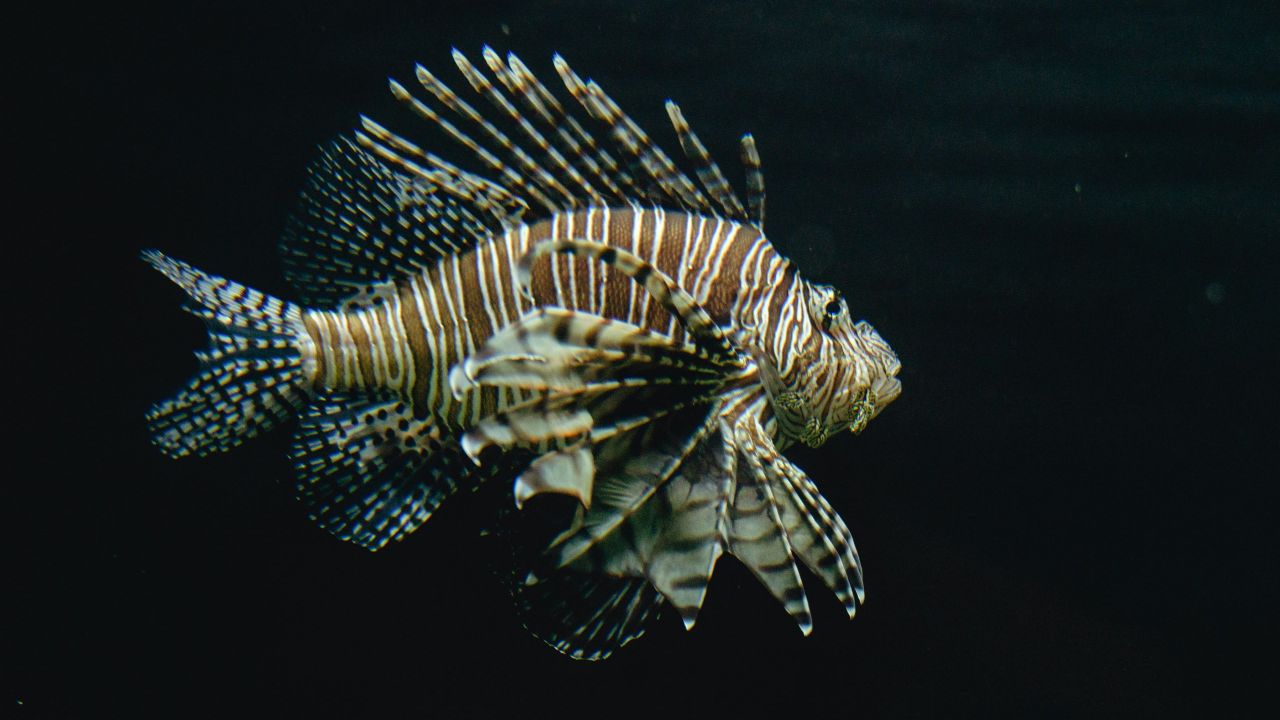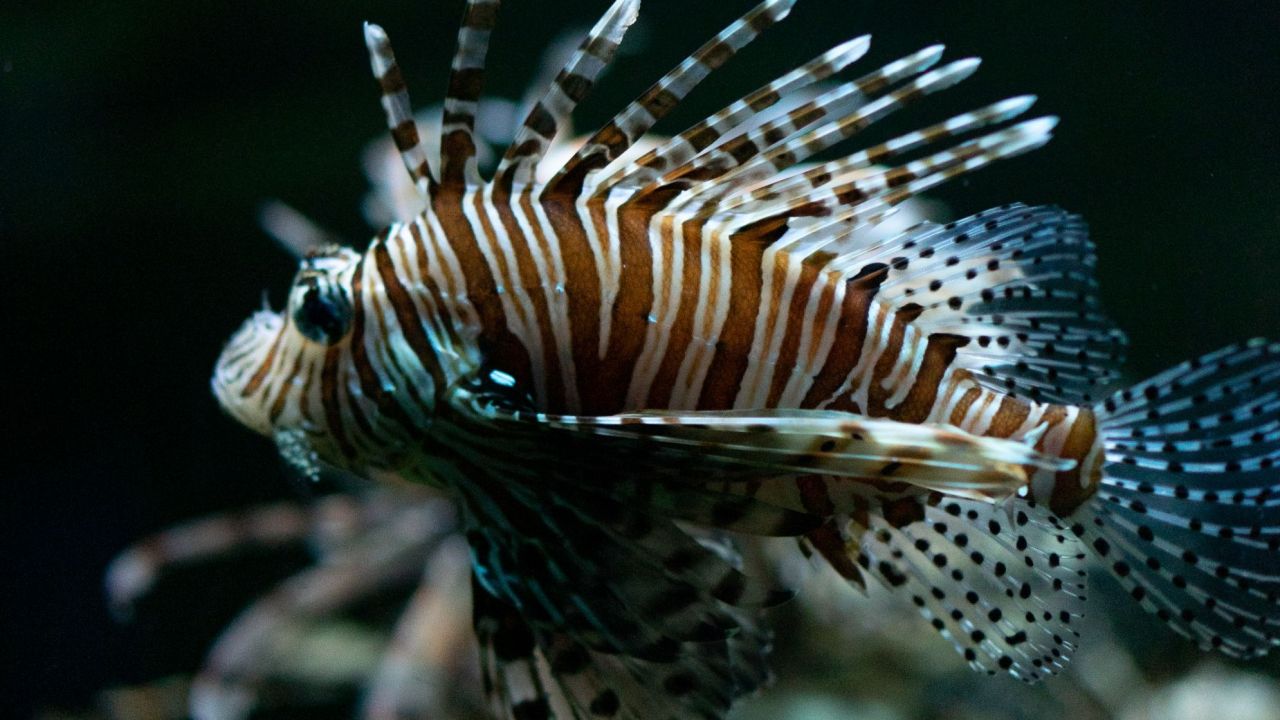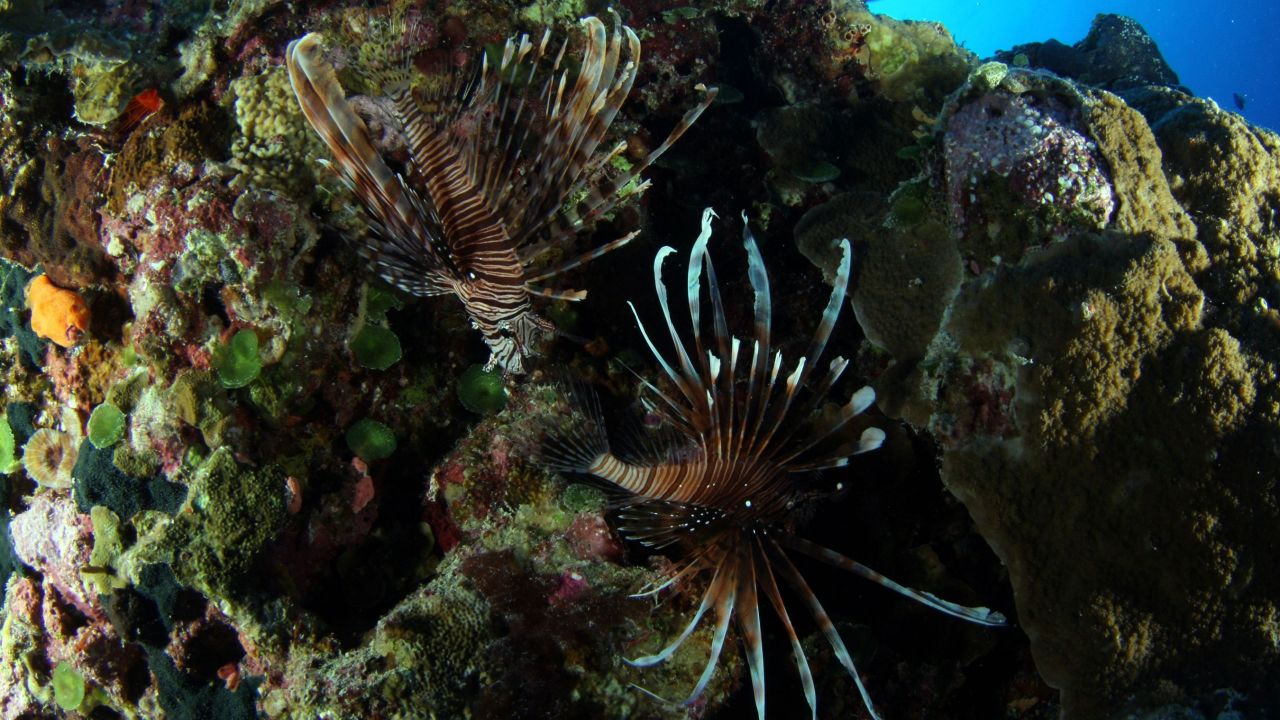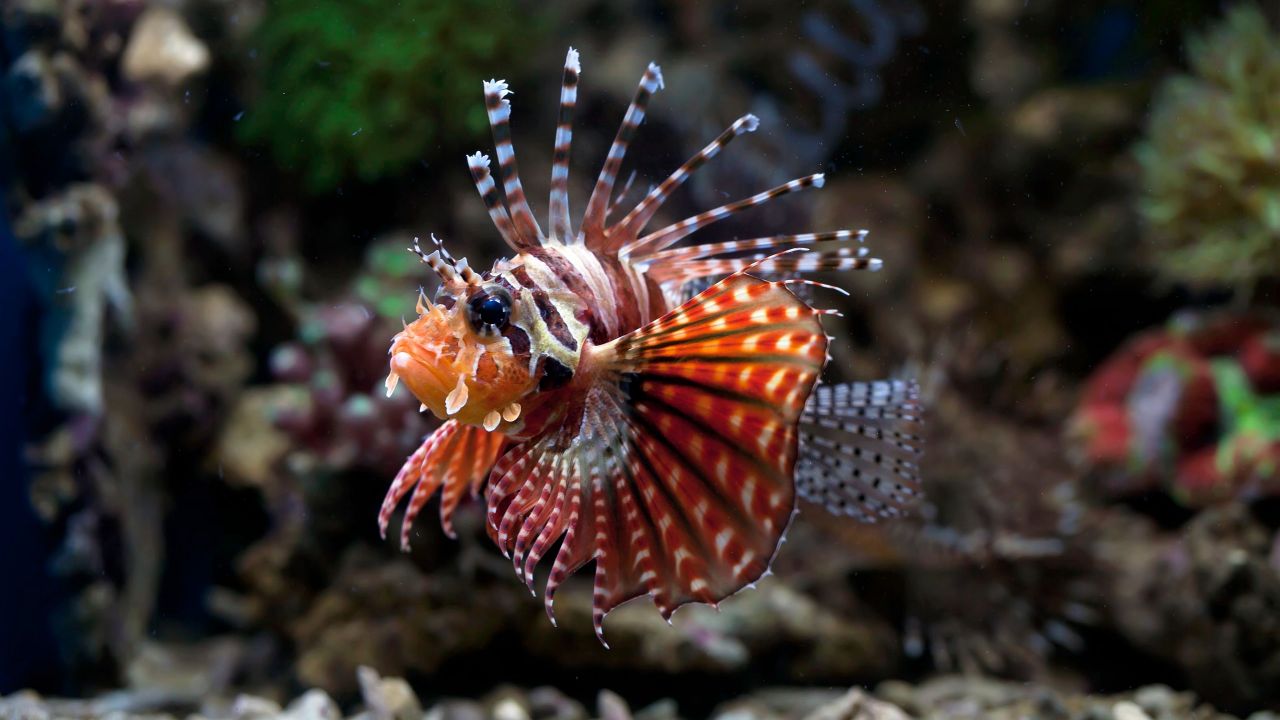
Lionfish (Pterois volitans): a carnivorous fish native to the Indo-Pacific.
AKA: zebrafish and firefish
Kingdom: | Animalia
Phylum: | Chordata
Class: | Actinopterygii
Order: | Scorpaeniformes
Family: | Scorpaenidae
Genus: | Pterois
Species: | P. volitans

Size and Weight:
An adult lionfish can grow as large as 18 inches, while juveniles may be as small as 1 inch or less. An adult weighs about 2.5 pounds.
Appearance:
The lionfish’s head and body are brightly striped with brown and white stripes. They have fleshy tentacles above their eyes and below their mouth, and long, fanlike pectoral fin. They have 13 long, separated dorsal spines. Their distinctive appearance is a warning to potential predators that the lionfish’s grooved spines are equipped with venom, which can cripple a predator and even kill a human. The venom of the lionfish is a defensive adaptation and is not used to catch prey.

Diet:
Lionfish are nocturnal predators that actively feed at night. They are ambush feeders that lay motionless on the bottom or underneath coral until prey ventures close. Then, with a quick strike, they dart at their prey. Lionfish eat any animal smaller than the size of their mouth, including smaller fish, crabs, shrimp and occasionally plankton.
Habitat:
Lionfish are most often found in marine habitats. They usually dwell in the warm marine waters of the tropics. Lionfish have been found in water depths from 1 to 300 feet on hard bottom, mangrove, seagrass, coral and artificial reefs.
Geography:
They are native to the South Pacific and Indian Oceans. They have a very large range that expands from the Red Sea across the Indian Ocean to Australia and the Pacific. Lionfish have recently been reported along the southeastern United States coast from Florida to North Carolina.

Breeding:
Males mate with several females during mating. After the fish spawn, they rise to the top of the water column and release gelatinous balls of eggs each containing about 2,000 fertilized eggs. The egg balls dissolve after about 24 hours, releasing the individual eggs which hatch in about 36 hours. While thousands of eggs hatch, very few young fry survive to maturity. The young immediately begin feeding on the available plankton or newly hatched brine shrimp. At birth, they are almost transparent. They develop the vibrant stripes of adults as they mature.
Social Structure:
Lionfish are solitary creatures except during breeding.

Lifespan:
Their lifespan in the wild is unknown but they live approximately ten years in captivity.
Threats:
Lionfish have no natural predators. They are not currently listed as threatened or endangered in their native range. In some areas, they are considered an invasive species. However, the increase in pollution in coral reefs may negatively affect the lionfish’s primary food sources. If lionfish are unable to adapt to declines in their prey species, their numbers may decrease.

Conservation Status:
Lionfish are listed as of Least Concern by the IUCN’s Red List of Threatened Species.
Conservation:
The lionfish is widely regarded as an invasive species. They have the potential to harm reef ecosystems because they are a top predator that competes for food and space with overfished native stocks like snapper and grouper. Scientists fear that lionfish will kill off helpful species like the algae-eating parrotfish, allowing seaweed to overtake the reefs. In the United States, the lionfish population continues to grow and increase its range. Their increase is due to the lack of natural predators and their high reproduction rate. Lionfish populations are monitored and studied.
Source: National Oceanic and Atmospheric Administration and the Denver Zoo.
